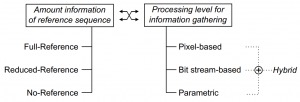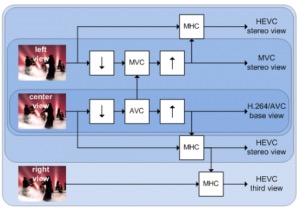
Ensuring and maintaining adequate Quality of Experience towards end-users are key objectives for video service providers, not only for increasing customer satisfaction but also as service differentiator. However, in the case of High Definition video streaming over IP-based networks, network impairments such as packet loss can severely degrade the perceived visual quality. Several standard organizations have established a minimum set of performance objectives which should be achieved for obtaining satisfactory quality. Therefore, video service providers should continuously monitor the network and the quality of the received video streams in order to detect visual degradations. Objective video quality metrics enable automatic measurement of perceived quality. Unfortunately, the most reliable metrics require access to both the original and the received video streams which makes them inappropriate for real-time monitoring. In this article, we present a novel no-reference bitstream-based visual quality impairment detector which enables real-time detection of visual degradations caused by network impairments. By only incorporating information extracted from the encoded bitstream, network impairments are classified as visible or invisible to the end-user. Our results show that impairment visibility can be classified with a high accuracy which enables real-time validation of the existing performance objectives.








